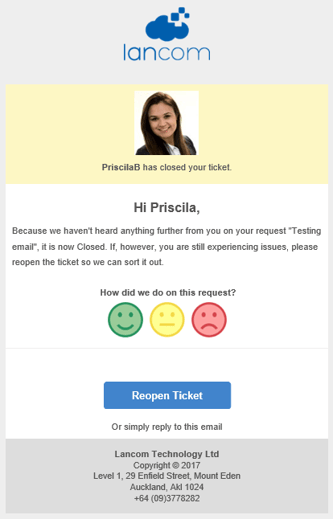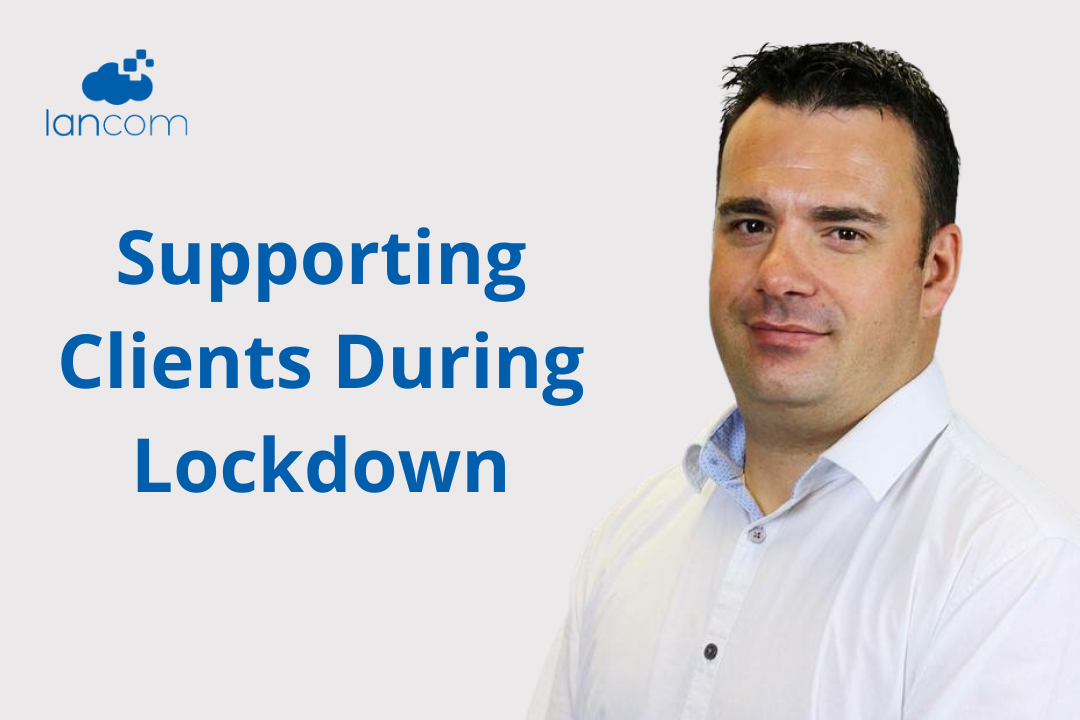Service Levels Agreements are everywhere, from Energy Companies to Pizza Delivery. For consumers it’s things like “delivered in 30 minutes”, or “the best nights’ sleep you’ve ever had”. For businesses it’s measured in response times, uptime or resolutions times – and setting these expectations is important! They allow both you and your customers to know when you are performing, and when there is work to be done to meet expectation.
At Lancom we have set strong SLA’s that we are proud of, so we want to give you a behind the scenes peak at what they are!
Before we dive in, we want to bring up an important 'extra', which is crucial in the success of implementing SLA's – the Communication Level Agreement. What's often missing is the discussion around the discussion! When and how will you communicate with your customer, especially in their times of need. The SLA is a great document, but it lives in the past. You only go to it after the fact. SLA’s always talk about mean time between failure, business hours response times and defect rates. And why do they always have a little star?
To me, a Communication Level Agreement is an internal process designed to improve external interactions. It’s about increasing the levels of communication which keeps the interaction alive and in the present. It keeps everyone on the same page. Note I said this was a process, NOT a 25-page legal document. For this to be true, it must be part of your company DNA, your culture. It must be seen and felt everyday by all team members at all levels.
You see, throughout my IT career (20+ years and counting!), whenever things have gone a bit pear shaped – and in IT they do – it’s often come down to the level of communication and understanding the customer was provided. IT people are often portrayed as the backroom people, not wanting to interact or talk to others. Did the technician call the customer to say things were being worked on, and it’s taking a bit longer than expected? Did the sales person let the customer know the quote was just waiting on a 3rd party? How many times have you wished that someone had just picked up the phone and told you what was going on. What about how things work in reverse? Have you been trained or taught how to log calls, or does the wait time just get longer every time you call?
To help bring the practical side back into the discussion, here's how we put these ideas into practice.
Constant Internal Discussion
First and foremost, the process begins internally with our team. Communication is discussed at all of our first-line team meetings to ensure our team responds to customers in a fashion that make sense – not just email the customer back, but perhaps picking up the phone is the best way. I encourage my team to look for ways to add value to the conversation and keep people in the loop, not just tick the “we responded” box. We discuss previous calls and tickets to understand how we could have done better, and ideas to make communication better for our clients.

(Hint: Powerpoint may not be the best way to communicate!)
Open SLA Discussion
We show you how we performed against our agreed SLA’s at monthly meetings, warts and all. If we missed a metric, we show you. We don’t hide it. But this is so we can have an intelligent conversation about it and look for ways to improve together.
Multiple easy ways to communicate
Like most, we offer multiple channels to get in touch whether it's by email or the phone. However, by going to the next level, our Lancom Button gives users the options to open a text-based chat right on their desktop, allowing for screen share as well as connection to a real person who can assist with query. Customers can also see the status of existing tickets in a clean, easy to use layout, and provide further details if needed, and even close the ticket if they feel it has been resolved.
Part of our onboarding process is to come to our clients site and teach them not only how to use the Lancom Button but why that is important to us and them.
We go one step further –
We customise the Lancom Button to suit the specific needs of each client (in a language that makes sense to the staff) and make sure teams can therefore quickly and easily access support.
Filling Knowledge Gaps
Sometimes the problem isn’t a technical one, but more a knowledge gap that needs to be filled.
We understand that learning is a continuous process that never ends – Continuous Learning is one of our core values! This is why we provide customers with Knowledge Base Articles, Blog posts, Learning Management Systems and informative video discussions to keep people up to date with technology, and the opportunity to learn new tools & features for yourself.
We recognise that no one ideally wants to contact tech support. By the time most people do they are either frustrated because they have a problem to solve or just need a solution there and then.
By empowering our customers to help themselves, we are therefore sharing what we know and ensuring that we have healthier and productive conversations.
Identifying VIP’s
Whilst we recognise that up time is key to all end users, we are realistic and understand that your most paid resources are probably the ones who need IT up and running quickest - and we have a system to automatically manage this. We ensure jobs are escalated in priority and reviewed urgently, to ensure when that VIP logs a job, it’s attended to immediately.

(Figure 1. Identified as VIP)
Fast Track Tickets
By classifying some users as VIP’s we are by no means excluding the others. FastTrack provides the ability for any user, not just ‘special’ users to fast track jobs.
From time to time there are jobs that need to be done urgently, and right within the Lancom Button customers can escalate the priority of the job to ensure it gets reviewed and resolved.
We care about the feedback we get (and make it easier to get these)
Every ticket we complete is followed up with a request to rate the level of support. With one simple click, Lancom customers can let us know how we’re doing. These responses are sent to our technical & leadership teams so we can review and make the experience even better.

Service Level Agreements define the metrics around how services are delivered. However, communication between a supplier and client is where the magic really happens. For SLA's to succeed, communication must be at the heart of your IT supplier, their processes and team.
As an IT provider, we recognise the need to make process easy for your clients, as well as easy for your team to do. Above all, you need to accept that communication cuts right to the heart of what makes us human, so don’t hide from it.
If you're in the market for a new IT service provider, learn our 9 must-know tips before engaging in an IT change. You can download your free copy here.






